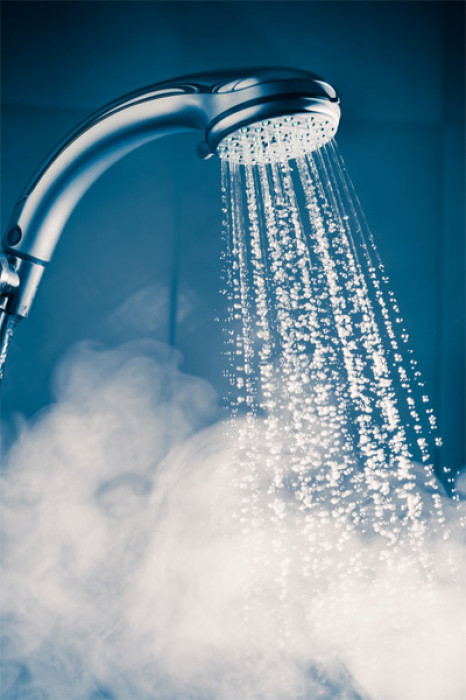Temperature
The temperature of tap water ranges from 60- 75 degrees (F).
Showering temperatures typically range from 85-105 degrees (F).
FlowRate
The flow rate of most drinking water filters is less than 1/2 gallon per minute (GMP).
Shower water flows at a minimum of 2.5 GPM (5x greater).
Even using cold water, a minimum of 5x the amount of carbon would be necessary to filter the shower water.

Volume
Most drinking filters produce 1-3 gallons per day (GPD).
Shower usage ranges from 12.5-50 GPD (12x greater).
Even with cold water and a 5x larger carbon filter, the filter would have to be an additional 12x larger, or a total of 60x the size of the original tap water filter.
Carbon is a cold water filter. It is most effective at temperature ranges of 50-80 degrees (F). At higher temperatures, carbon becomes ineffective. It will "off-load" and release contaminants into the water. Sprite shower filtration media was designed for hot water, becoming more efficient as the water temperature increases.
Of course, you don't shower in cold water and wouldn't use a 60 lb. shower filter. And we wouldn't cut a carbon filter in half and expect it to adequately filter shower water. Instead, Sprite invested a great amount of research in developing a line of realistic catalytic shower filters that filter both free and combined chlorines, dirt, sediment, odors, hydrogen sulfide, iron oxides, and more, from your shower water.


